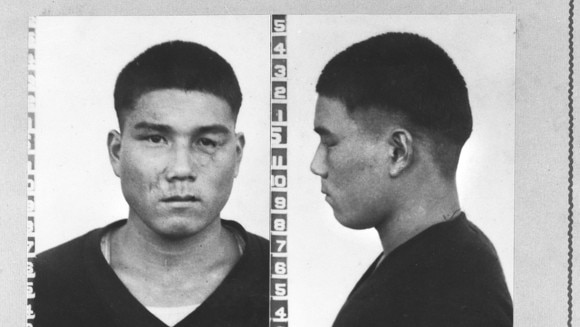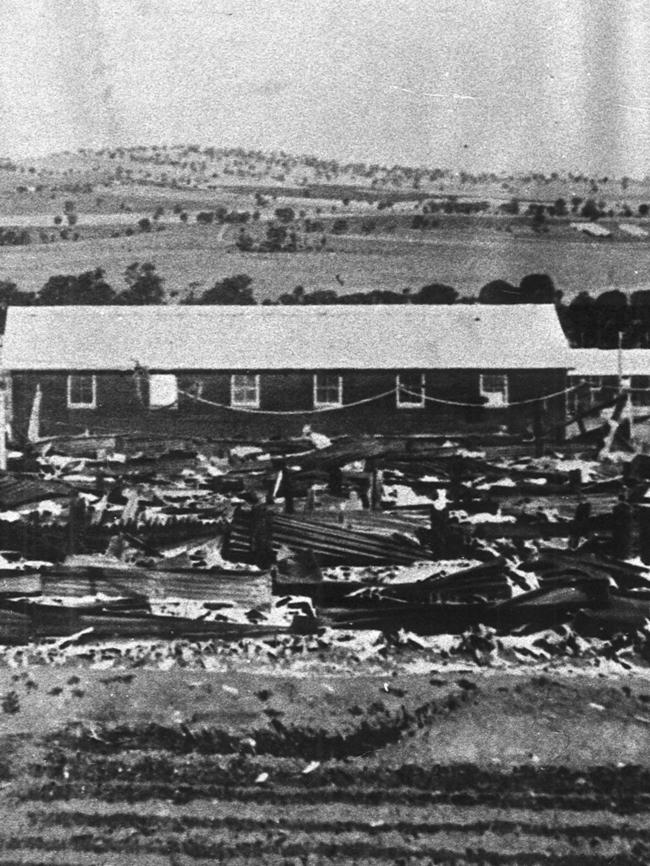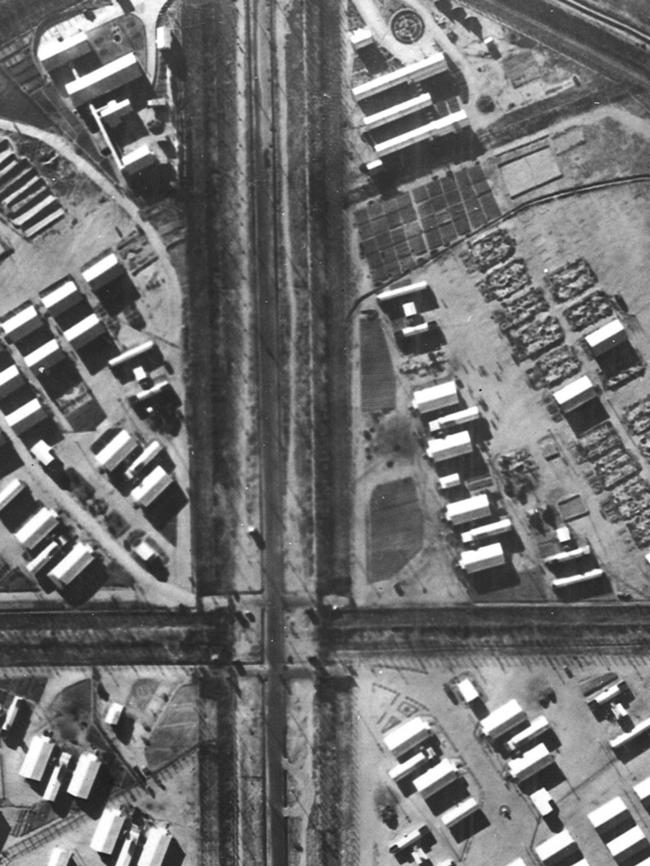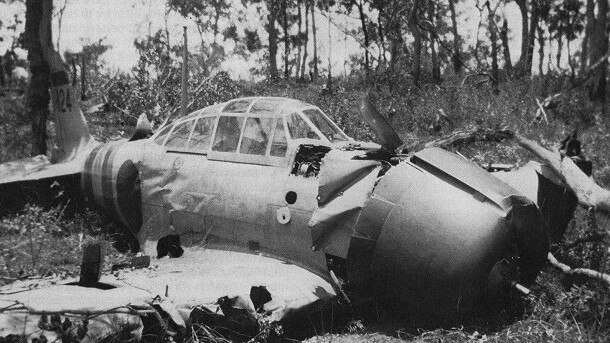Hajime Toyoshima was destined to go down in history, though perhaps not in the way he imagined
He came into the world on March 29, 1920, in the tiny Kagawa Prefecture in Japan, but lost his life a world away from his seaside home
It was a beautiful clear day for the Wet Season in the Top End of Australia when Toyoshima conducted the finals checks on his A6M Zero. He was to depart the air raft carrier Hiryu with other Zeros to make sure the Kate and Val bombers could complete their mission over Darwin safely.
Beads of sweat pooled on Toyoshima’s face before he forced his snug helmed over his head and climbed into his aircraft. The Chief Petty Officer in the Imperial Japanese Navy was considered a fairly experienced pilot just seven months after he earned his wings as a pilot.
As the coastline of Darwin approached and the bombs fell to the earth below, it was hard not to think of the people.
Darwin was only a small town, but the raging war had left so many widows already. Rubble formed from what were once ships. The hulls slowly sank to the sandy earth below, taking with them the souls of Australian soldiers.
Homes crumbled on the RAAF base and streets were strewn with debris. At first Toyoshima didn’t notice he’d be hit during his strafing run. He was on his way back to Hiryu when he realised as his companions disappeared into the blue sky must faster than he could keep up with.
As he watched the oil pressure falling rapidly and his engine temperature climbing Toyoshima’s heart pounded. He wouldn’t make it to Hiryu, based about 300km from Darwin.
There were two options: the open ocean, or the Tiwi Islands. One the way to Darwin he had passed over the tropical islands — nine Zero fighters had strafed the Bathurst Island runway and took out the he radio hut broadcasting warnings to the mainland.
Toyoshima knew he could make it to land. As the red earth and hurtled towards him, Toyoshima straightened the plane as much as possible, held his breath, and hoped for a painless landing, or a quick death.
Moments later, the dust and smoke chocked Toyoshima. He clambered from his wreckage, only hitting his head on the dashboard.
He grabbed his gun and set off to put as much distance between the plane and himself but he knew he needed a plan.
And a fake identity.

On a humid February day Matthias Ampiyartilawayi Ulungura was been out hunting with family. After a successful day with his hunting party, he was approached by a frantic woman.
A space man had landed and picked up one of their babies while they were out foraging. The women had fled into the bush and searched for help. To this day no one knows why Toyoshima took hold of the small child, but it allowed his capture.
Ulungura clutched his tomahawk as he snuck up behind the Toyoshima. Leaves crunched under his feet as he planted the handle firmly into Toyoshima’s back while simultaneously grabbing Toyoshima’s pistol out of its holster.
“Stick ‘em up,” he said, a phrase which became part of his legend. In one movement Ulungura disarmed and captured Toyoshima.
Ulungura arranged for Toyoshima to be taken from Melville Island to Bathurst and led him to the Sgt Leslie J Powell, from the 23 Field Company, Royal Australian Engineers.
Powell was on the island to maintain demolition installations and was unarmed until Ulungura gave him Toyoshima’s service weapon.
With the barrel of his own gun following his movement, Toyoshima’s heart began to beat from the pit of his stomach.


Toyoshima sat with his head bandaged in a singlet, shorts and boots as Australia troops interrogated him once he was flown back to the mainland.
He told them his name was Tadao Minami and that he was a bomber crewmen.
With limited resources to verify his information, Toyoshima became Minami. A name he would be burried as. But for a time he was simply PWJ 910.1.
It was the accolade he never expected; the first prisoner of war taken on Australia soil.
He spent a long time contemplating his next move as he was transported to the Cowra POW camp in New South Wales which would become his home until his fateful end.
Toyoshima was among 4000 Axis military personnel kept in the No 12 POW compound, a touch more than 300km west of Sydney, when he arrived in 1942. But there were few Japanese faces among the prisoners held in the desolate flat land.
The next two years saw an influx of Italian and Japanese comrades squeeze into the camp. The conditions became unliveable to Toyoshima. The overcrowding and the cold made life unbearable. He and fellow inmates hatched a plan. A breakout.
In the glow of the midnight moon Toyoshima readied himself mentally. The day had just ticked over to August 5, 1944.
The Japanese POWs had been told the day before they would be moving to a different camp in Hay, 400km West of their overcrowded home of the last two years. He thought back to that fateful balmy day in Darwin.
Could he have said a different name, a different story? Could his Zero have made it back to Hiyu? If only he had attempted …
He looked up at the mottled clouded sky and the stars twinkling though. He licked his chapped lips and pressed them into the cold metal of the bugle.
He tightened the corners of this mouth, took a deep breath through his nose, and blew steadily to hear the bugle’s cry sound echo through the compound.
Shouting began, quickly followed by gunfire. “Banzai!” The Japanese cry came from all sides as groups charged and began breaking through the wire on the north, west and southern sides of the compound. Blankets helped protect them from the sharp barbed wire.
Baseball bats, clubs studded with nails and hooks and knives helped them in their escape. Soon the clouded starry sky filled with smoke as many of the buildings were engulfed with smoke.


Toyoshima ran with the waves of charging escapees. The guard’s gunfire desperately attempted to hold those fleeing at bay until they were overwhelmed by the sheer weight of those killed.
Bodies were strewn throughout the compound and beyond the fences. Of the 1100 who attempted to escape, just 359 made it out. Some, only to suicided to avoid recapture. The rest were rounded up within 10 days.
Four Australian soldiers were found among the dead. The final toll saw 231 prisoners die in their attempt for freedom from the camp. Among the bodies lay Toyoshima, who left the world just 24 years after he arrived, far from the coasts of his home town.
Disgraced with the prospect of recapture, he was one of many to take his own life. His body was found in a ditch outside the compound. The archives carry Toyoshima’s name, but not as a noble Japanese fighter, but as a prisoner of war who sounded the start of a failed breakout.
It was a far cry from how history remembers his captor, Ulungara, who’s story was passed from generation to generation on the Tiwi Islands. A bronze, life-size statue of one of Australia’s unsung war time legends stands on the Tiwi Islands.
A proud reminder of the role of indigenous Australians in the War.


‘Astounding’ WWII site loses heritage listing amid Top End housing push
Just 24 hours after laying a wreath for Anzac Day commemorations, the NT Planning Minister publicly announced he would remove protections from historic WWII wreckage in an area slated for a 4000-home development.
‘Lest we forget’: Bombing of Darwin war hero dies aged 104
World War II veteran and Bombing of Darwin survivor Brian Winspear AM has died peacefully aged 104.